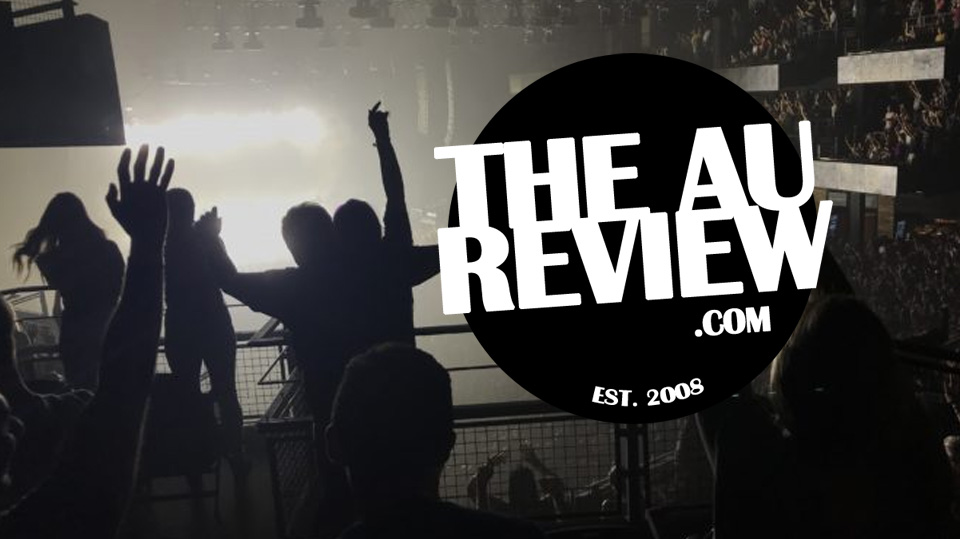

Vitesse has had many ballet lovers interested in what ballet can be defined as. With many defining the performance as intense, the production looks to be a daring dance that breaks away from traditional ideas of what ballet is. The music accompanying dancers on stage is a mix of pulsating electronica, swirling penetrating soundtracks and unnerving eeriness, making for a particularly intriguing night in either the Arts Centre Melbourne or Sydney Opera House.
Dancer Rudy Hawkes was kind enough to chat to us at The AU Review prior to the first performance at the Arts Centre starting in a few days.
People have said that Vitesse is a ‘ballet at full voltage’ In your opinion how much of this statement is true?
It is pretty true. The all three works have been pretty full on movement and have been fairly extreme and the music for all of them have been full body and punchy in some moments. I’d say it is pretty much spot on actually. It pushes the dancers out of their natural ballet technique world, pushes them to their extreme. All three choreographers in the different pieces have done that. It is a really good mix, actually.
Can you explain what you mean by ‘pushes you to the extreme’? I assume you are doing things that are a bit unconventional.
It’d be like when you are walking, your arms and legs swing normally with no extra effort on a usual day. But in ballet, just walking requires your whole body. Where every time you move your leg forwards you have to fully go down to touch your toes and then back up again.
For someone like you who has a lot of experience in ballet, was that something the idea of go to the extreme even more challenging to you? Is there something that you tried to achieve further than the previous pieces you have performed in?
I prefer the contemporary pieces because they push you to those extremes. I don’t have a huge amount of ballet technique to begin with… the natural coordination of the contemporary works, works a little bit more to my body’s make up.
You talk about the more modern parts of ballet and to me a modern piece is Christopher Wheeldon’s Danse à Grande Vitesse. Is it rigorous to portray such a highly intense ballet, especially a piece that embodies a train as it passes through a tunnel?
After I read the description of the music and where the score came from, I saw a little bit more into the movement and the whole work. But until then it didn’t stick out like a sore thumb but he has embodied that feeling with the pas de deux and the group stuff. You do get that sense of transportation type thing.
Ballet is often seen as a graceful and delicate performance, but having a piece where you are trying to portray the intensity of a high speed train is kind of a juxtaposition between two things?
I suppose that is the brilliance in the way Christopher Wheeldon has choreographed it, where you get that strength out of delicate female figures partnered with strong men who also contributes a fierce nature to the whole thing. The music also gives the piece an overall sense of drama. But everything is still delicate and beautiful.
How does something like this compare with Forgotten Land?
I feel that Forgotten Land is very earthy. The choreography is very grounded and you get this earthy flavour out of doing the steps. And watching it, you feel that everything is settled in, like a wild painted picture where how it all seems as like it should be. With Jiří Kylián’s work it always seems like all the movement was meant to go with that music. It is such watchable movement. It is all effortless, one thing flows into the other. Nothing looks strained. Keeping it effortless is also the challenging and rewarding part of doing it as well.
In rehearsals, did you have to think about how you approach the two performances?
You set out with that earlier on when you are learning the pieces. They will give you focus points on the different steps that you are doing. When you are going off into one or the other you just focus on those key points in the two different ballets. Because you rehearsed it back then, when you get the shows, the music is on, you got the costume on and you know what you are doing by that time. We are all used to working those sorts of situations where you have to slip from one thing to the other pretty quickly.
—
Australian Ballet’s Vitesse will be performed at Arts Centre Melbourne between 11 – 21 March (no performances Sunday. It then moves to the Sydney Opera House for performances between 26 April – 16 May. Tickets are available here.
———-
